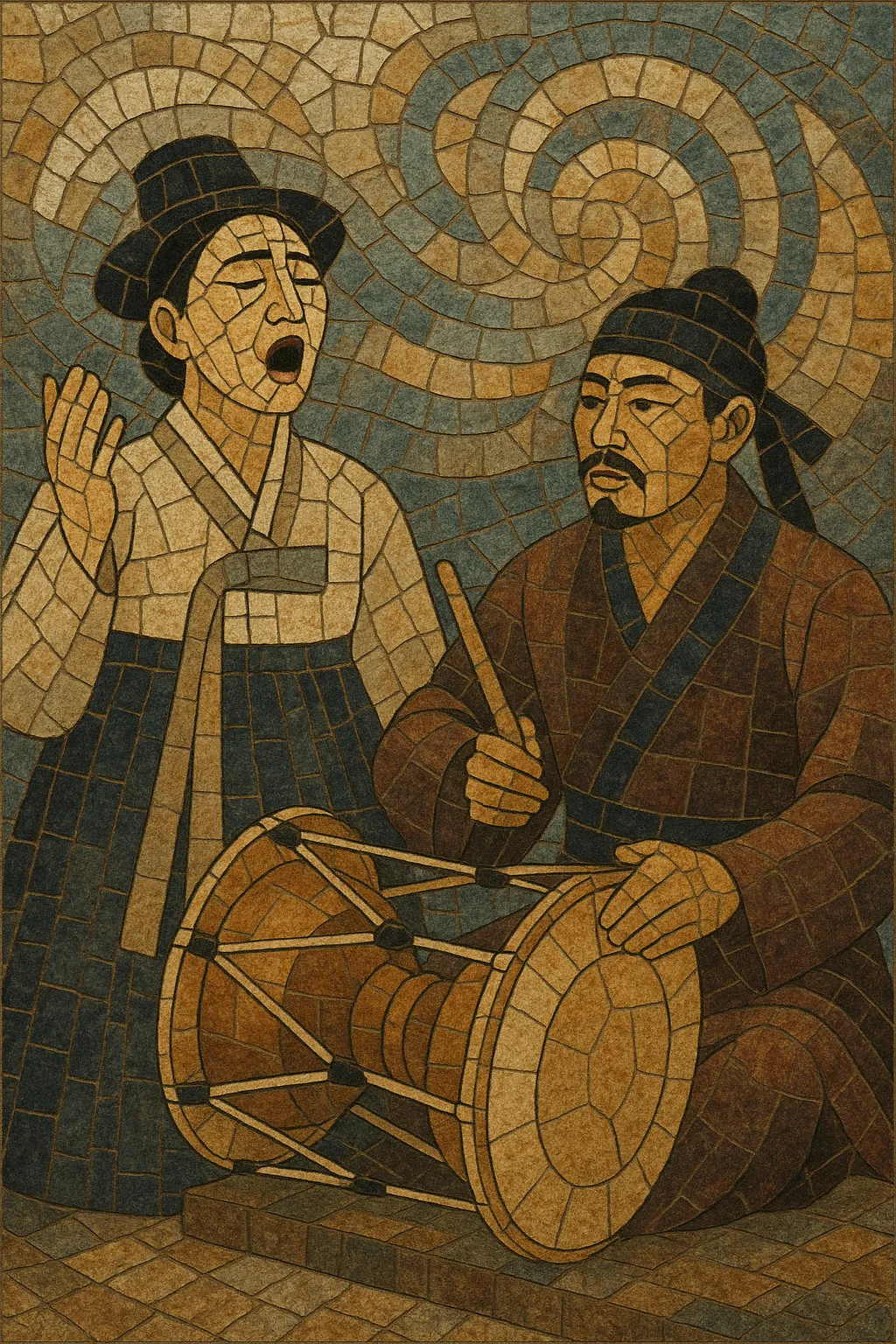Pansori is a Korean epic narrative singing tradition performed by a single vocalist (sorikkun) and a barrel drummer (gosu) who accompanies on the buk and shouts improvised interjections (chuimsae). The singer narrates, acts, and sings a long story—combining lyrical arias (sori), spoken narration (aniri), and expressive gestures and mime (ballim)—to portray multiple characters alone on stage.
Musically, pansori employs modal systems (jo) such as pyeongjo, ujo, and gyemyeonjo, and cycles of rhythm (jangdan) like jinyangjo (very slow), jungmori, jungjungmori, jajinmori (fast), hwimori (very fast), and eotmori (asymmetrical/5-beat). The vocal style favors powerful projection, intricate ornamentation, flexible timing, and dramatic timbral color, often cultivated through rigorous traditional training.
Canonized works (madang) such as Chunhyangga, Simcheongga, Heungbuga, Sugungga, and Jeokbyeokga represent the core repertoire. Pansori is widely recognized as a hallmark of Korean performing arts and has been inscribed by UNESCO as an Intangible Cultural Heritage.
Pansori emerged on the Korean peninsula during the late Joseon dynasty, crystallizing in the 18th century out of regional folk narrative practices, itinerant entertainers’ traditions, and performance in southwestern provinces such as Jeolla. Early pansori drew on native Korean modal practice and rhythmic cycles shared with court and folk repertoires, while adapting popular storytelling to a virtuosic solo format.
In the 1800s, pansori matured into a highly codified art with master–apprentice lineages, an expanded vocal technique, and a stabilized canon of long-form stories (madang). Professional sorikkun cultivated distinct schools (yupa) and introduced deoneum (personal variations), enriching the tradition’s melodic shapes and narrative pacing. Performance contexts ranged from markets and private gatherings to courtly patronage.
The 20th century saw shifts in patronage and the rise of new media and popular genres. While urbanization and modernization challenged traditional performance circuits, state and cultural institutions instituted preservation efforts, designating holders of Important Intangible Cultural Properties and establishing training programs. Pansori also inspired derivative forms such as changgeuk (Korean opera) and influenced elements of Korean popular singing.
Recognition as UNESCO Intangible Cultural Heritage spurred renewed interest and international touring. Contemporary artists continue to perform the classic five madang while also creating new works, cross-genre collaborations, and educational projects. Today, pansori balances faithful transmission of lineage-based techniques with creative reinterpretation for modern audiences.


